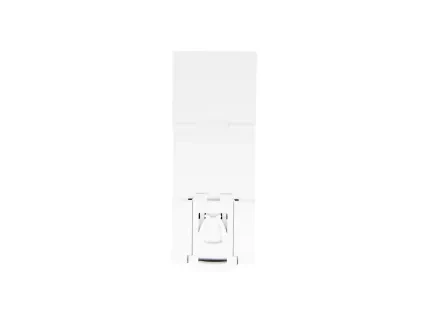On this page
Product specifications
Measurements
Measurements (box)
Specifications
The PIERRE Power Supply 12V/2A offers an enhanced power capacity compared to the 15W model, delivering a 24W output with 2.0A current, perfect for powering more advanced smart home devices such as controllers, sensors, and automation equipment.
The 100-240V AC input ensures compatibility with a wide range of power grids, while the efficient AC to DC conversion guarantees a stable 12V output for optimal device performance. Designed for professional automation systems, this power supply integrates effortlessly into electrical panels via DIN rail mounting, offering both reliability and ease of installation for larger smart home setups.
Print user manual for Power Supply 12V/2A 24W (DIN)
- H: 8.9 cm
- D: 5.9 cm
- W: 3.5 cm
Input
100-240VAC
Output
12.0V DC, 2.0A, 24W
Efficiency
87%
Power Factor (Pf)
0.99
Current
2.00A
Connectivity
Zigbee
Wiring
N - Neutral L - Line
Product color
White
Mounting
DIN Rail
LED Indicators
Yes
Operating Temperature °C
-20°C ~ +70°C
Operating Temperature °F
-4°F ~ +158°F
Operating Humidity % RH
20% - 90% RH, Non Condensing
Safety features
Overload, Over Voltage, Short Circuit
IP rating
IP20
- Connect the AC input terminals to mains power: L (Live) and N (Neutral).
- The power supply converts AC to 5V DC, with outputs labeled +5V and GND.
- Connect +5V to the device’s VCC input, and GND to its GND input.
- Use proper gauge wires and double-check polarity to avoid damaging connected devices.
Functional Diagram – System Overview
The diagram illustrates the internal functional structure of a standard switching mode power supply (SMPS). This block diagram provides a high-level representation of the main operational stages from AC input to regulated DC output.
Block Descriptions:
- I/P (Input):
- AC mains voltage is supplied to the power supply.
- EMI Filter:
- Attenuates conducted and radiated electromagnetic interference to meet EMC compliance and protect downstream components.
- Rectifiers & Filter (Primary Side):
- Performs AC to DC conversion and smooths the rectified voltage using capacitive filtering.
- Power Switching Stage:
- A high-frequency switching converter (typically using a MOSFET) chops the DC voltage to drive the transformer. Switching is controlled via PWM (Pulse Width Modulation) for efficient power regulation.
- Transformer:
- Provides galvanic isolation between input and output and adjusts the voltage level through step-up or step-down conversion.
- Rectifiers & Filter (Secondary Side):
- Converts the high-frequency AC from the transformer back to DC, followed by filtering to reduce ripple and noise. Delivers dual output rails: +V and –V.
- Detection Circuit:
- Monitors output voltage levels and generates feedback for regulation. Ensures output remains within defined tolerances under varying load conditions.
- Control Circuit:
- Core of the regulation system. Processes feedback signals and adjusts the switching duty cycle accordingly. Ensures stable and accurate DC output.
- O.L.P. (Over Load Protection):
- Detects overload or short-circuit conditions on the output. Limits output current or shuts down the converter to prevent thermal damage.
- O.V.P. (Over Voltage Protection):
- Monitors output voltage and disables the power supply if voltage exceeds predefined limits, protecting connected loads.
- Load (%)
- Ambient Temperature (°C)
- Load (%)
- Input voltage (VAC) 60Hz






